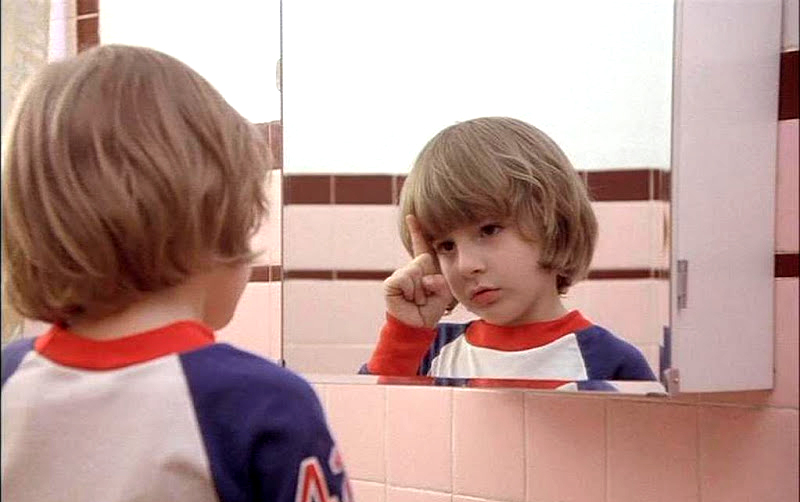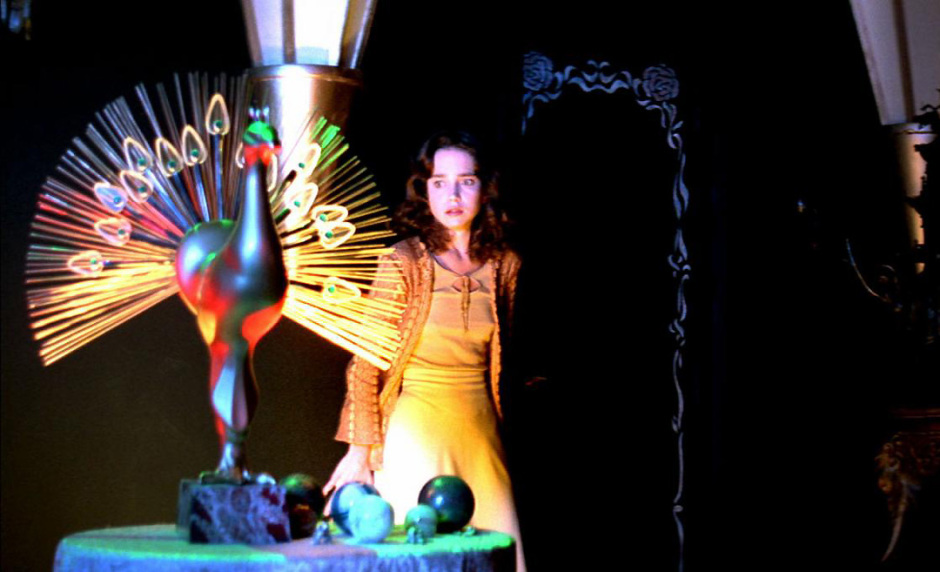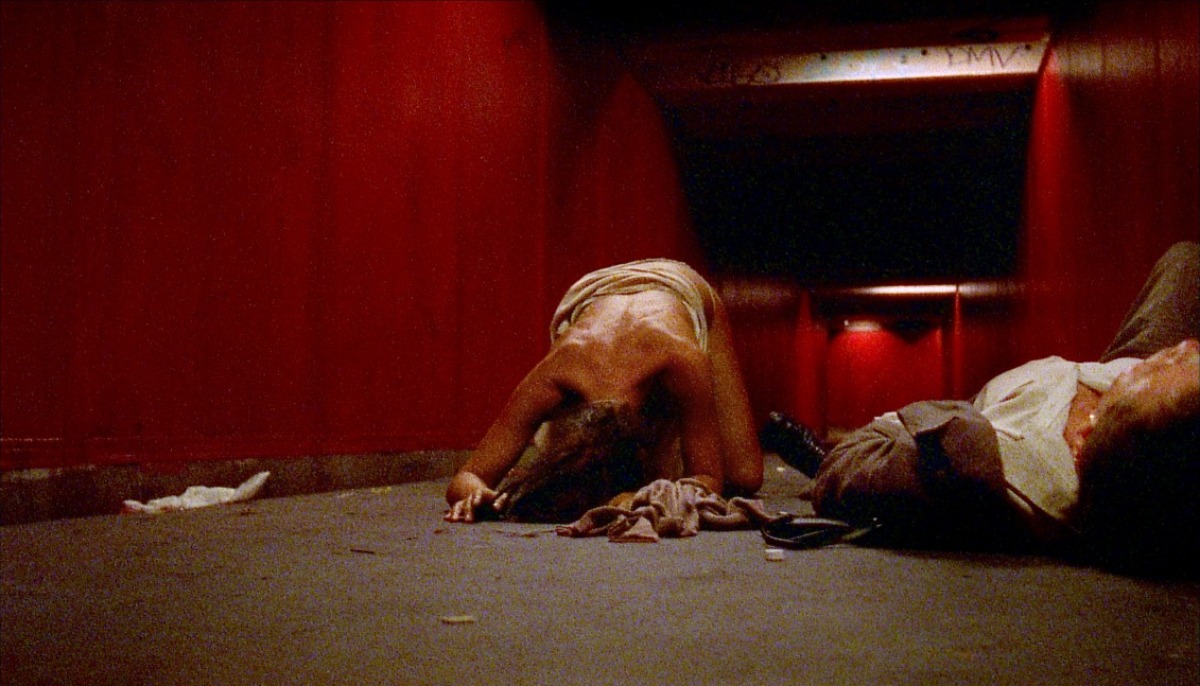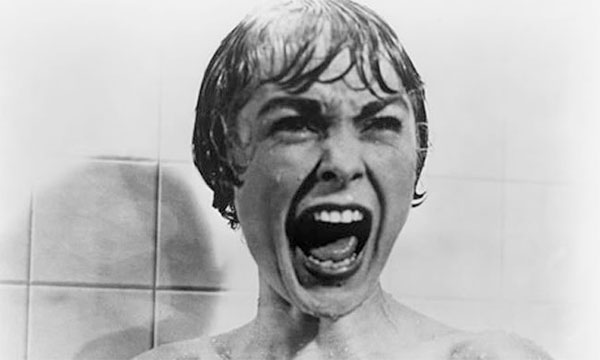5. The Shining (Wendy Carlos & Rachel Elkind)

Stanley Kubrick always had a very unique approach on his scores. He often linked symphonic works with electronic productions, resulting in a very distinct musical aesthetic. Just like “2001: A Space Odyssey” or “A Clockwork Orange”, his 1980’s horror movie “The Shining”, starring Jack Nicholson, works in this manner.
In particular, the opening sequence is a prime example of his use of music. While a beautiful hill landscape is shown on screen with a car driving through the rolling streets, the music is a sinister composition made of cold synthesizer sounds. This counterpoint use of music is well known in Kubrick’s oeuvre (just think about the famous rape scene in “A Clockwork Orange”, for example).
The music of Rachel Elkind and Wendy Carlos is a symphony of terror, working as a musical precursor for the diabolic energy of the Overlook Hotel and the danger the characters are about to enter. Parallel to the protagonist’s decline into madness, the soundtrack evolves into a terrifying musical tour de force.
Despite the movie’s own compositions, a lot of external music is integrated into the soundtrack. Works of new music with avant-garde artists such as pioneering musicians György Ligeti, Béla Bartók and Krzysztof Penderecki especially elevate the score with its radical mixture of classical and modern elements.
4. Jaws (John Williams)

Telling the story of the sunlit seaport Amity and several life-ending shark attacks, the movie follows chief of police Martin Brody on his mission to protect the town from the shark’s bloodthirstiness and calm the frightened and vengeful locals.
Its huge level of suspense, Spielberg’s excellent directing style (among a lot of other features his style of blocking is simply brilliant), and not least the Oscar-winning soundtrack of John Williams (to date he’s won five Oscars and earned 50 nominations, being the second most nominated person after Walt Disney) made “Jaws” the origin of blockbuster movies as we know them today.
Williams’ work here is dominated by contrasts – the contrast between silence and loudness as well as between joy and terror. Some parts of the soundtrack are impulse-like infernos with high-tone horns and martial drumbeats (revealing some strong Bernard Herrmann influences), while others are triumphal compositions full of joy with harmonic string arrangements perfectly fitting the estival coastal town.
Few tracks have had such an impact on pop culture as the movie’s main theme; it’s a simple alternating two-tone pattern and is presumed to be a classic of suspense music, as well as one of the most recognizable themes in movie history. There are plenty of interpretations according to the theme; it might symbolizes the heartbeat of the shark, its unstoppable force or the human breathing. But what’s definitely certain is that its steady relentlessness is enthralling and pushes the movie into a new level of suspense.
3. Suspiria (Goblin)

“Suspiria” tells the story of American student Suzanne Banyon, who arrives in Germany in order to study at a ballet school. After her arrival at the ominous institution, she is confronted with mysterious incidents regarding occultism and witchcraft.
The 1977 Italian horror classic, directed by Dario Argento, might be the visually most stunning contribution to this list. Dominated by shades of blue and red, the production design is mesmerizing and gives a highly appreciated new approach on horror movie sets. The film’s soundtrack follows this original approach with Italian rock band Goblin being responsible for it.
The music is as experimental as it can be regarding the progressive rock background of the band and could be described as a work far beyond the simple approach of background scoring. Reaching from dissonant sound infernos to classic rock-inspired songs with genre-typical arrangements containing guitars, keyboards and drums, the soundtrack might be the most versatile on this list.
Perfectly fitting the movie’s occult themes, enigmatic voices create low-frequency hum-choirs and ritual-like chants, while often pronouncing the word ‘witch’. The vocal elements seamlessly fuse with conventional instruments like guitars and drums as well as very extraordinary ones like tabla and bouzouki, creating highly unusual soundscapes, in which the audience gets lost as well as the protagonist does in the supernatural events of the movie’s narrative.
The highly artistic and visionary use of instruments and the extraordinary melange with the stunning visuals makes the work of Goblin one of the most impressive scores of all time and a highly disturbing one as well. Perhaps one doesn’t find the score that creepy while listening to it without watching the movie, but in combination with the film, the horror of Goblin’s music is hard to surpass.
2. Irreversible (Thomas Bangalter)

Argentinean director Gaspar Noé has the reputation of being one of the most controversial movie makers working in today’s film industry. With only four feature films in his oeuvre, his experimental and radical approach to filmmaking resulted in some of recent cinema’s most innovative and especially most disturbing scenes.
While 2015’s “Love” gained its scandalous reputation thanks to the explicit illustration of sexual intercourse, and “Seul contre tous” attracts attention with the nihilistic world of its protagonist and his excessive torrents of hatred, “Irreversible” might be the most shocking movie in Noés cinematic catalogue.
This effect has its origin mainly in some highly disturbing scenes with a ruthless 10-minute long take of a brutal rape in a danger-conjuring underground crossing, stretching it over the top. But the movie couldn’t build such an immersive world of rage, violence and sexual abysses without its unique score by French musician Thomas Bangalter. Being known for his involvement in the world-famous pop phenomenon Daft Punk, his artistic approach on electronic music is undoubtable.
For “Irreversible” he created a score dominated by cold-hearted synthesizer sounds, perfectly fitting into the diffus demimonde of the sinistre part of Parisian nightlife. While some tracks spray a almost danceable vibe highly inspired by some of his funky Daft Punk productions, other songs interweave dissonant sounds with polyrhythmic drum patterns. With some of the most brutal events imaginable happening on screen, the composer knows how to transfer this aesthetic into music.
Most of the tracks are minimal and often static in terms of tonal transformation, having a nearly hypnotic effect. Therefore, the audience gets irresistible roped in the movie’s world. In particular, the opening sequence in an obscure S&M club, ending with the blood-dripping smashing of a human head with a fire extinguisher, offers some of the most unnerving music to ever be heard in cinema.
1. Psycho (Bernhard Herrmann)

Often considered the best horror movie of all time, even after more than five decades Alfred Hitchcock’s “Psycho” knows how to send shivers down the audience’s spine. The movie tells the story of Marion, who breaks away from her daily life after having the chance to escape with 40.000 dollars from her boss. In order to get some rest, she stops at the obscure Bates Motel. After a short conversation with friendly host Norman Bates, she takes a shower and the deadly events take their course.
While the technical aspects of the visual realization may unmask slight weaknesses after decades of technological progress (nonetheless, the cinematography is fascinating and well made), the score contains brilliant music to this date.
The symphonic compositions spray a sinister vibe and work like a musical inferno at times, and many of the scenes are given excellent musical treatment. While dialogue happens on screen, subtle high-tone strings enhance the suspense and foreshadow the brewing evil of the motel. It’s also worth mentioning that during the protagonist’s drive, the score reveals one of its key themes that every cinephile will recognize immediately.
But there’s one scene in particular that underlines the diabolical power of the soundtrack, without which a review of the soundtrack would be wastefully incomplete. The scene with Marion in the shower and the unknown killer stabbing her with a knife (the shooting of this scene took one full week and several interesting cinematic methods) is one of the most memorable scenes in movie history.
The staccato-like composition works as an equally strong counterpart, illustrating the strictly divided psyche of Bates, and might be one of the most copied tracks in the cinematic universe. According to a legend, after the premiere, Hitchcock received a letter of a wrought-up man whose daughter refused to shower after watching the movie. Who can blame her, regarding the scene’s immense cinematic power? Hitchcock simply answered – “Send her to the dry cleaners.”
Author Bio: Berlin-based Luc Hinrichsen has a bachelor’s degree in audio engineering and plenty of experience in scoring movies on his own. Beside that, he is an aspiring screenwriter and director always curious about enlarging his knowledge about film and its history.